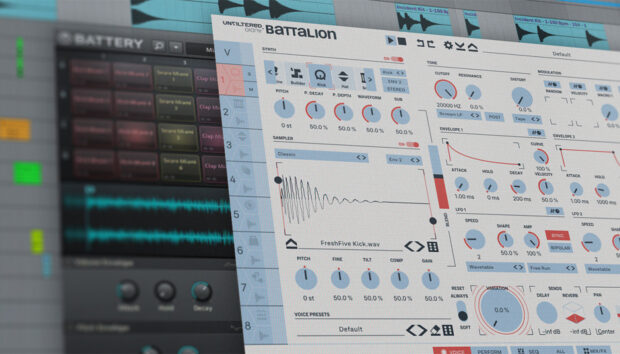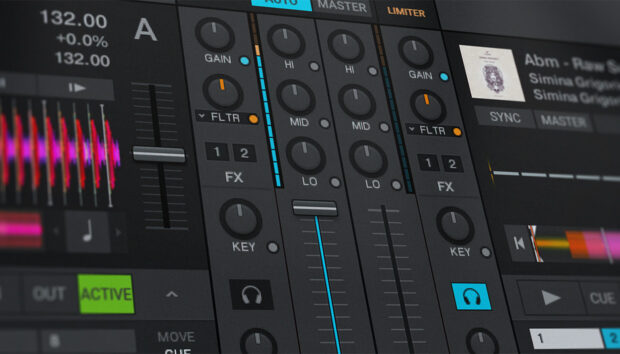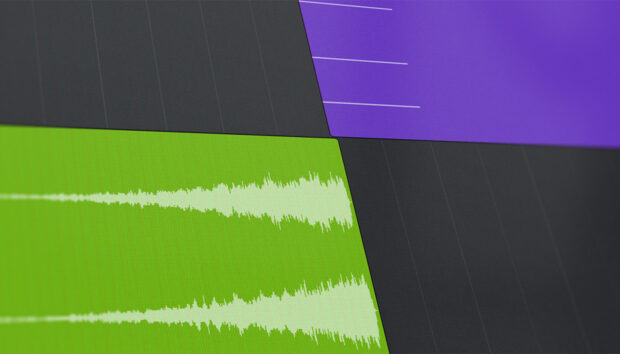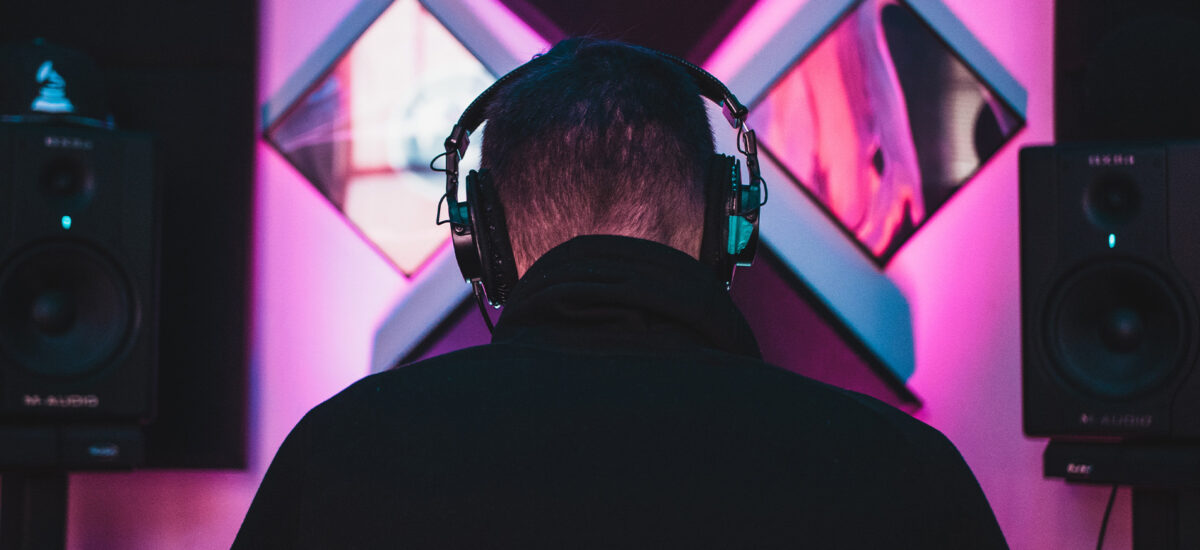
Modern music production gives you complete freedom and creative control—from the first seed of an idea, through sound design, arrangement, and finally mixing and mastering your work ready for release.
With so many demands on our time and attention span, we can be tempted towards laziness and quick results, flitting from one thing to the next without delving into the deeper workings. But building an effective workflow and adding more advanced production techniques in your music is something you need to work at long-term.
Read on for tips on how to get better at producing music—we’ll cover the full journey of a project, offering some handy online resources to guide you towards a more professional sound.
Jump to these ways to get better at producing music:
- Listen to more music
- Follow your instinct
- Learn music theory
- Learn your tools
- Practice regularly
- Build an efficient workflow
- Learn sound design
- Balance variation and repetition
- Test your music on different sound systems
- Learn how to mix your own music
- Get familiar with audio mastering
- Share your music and get feedback
12 ways to get better at music production
1. Listen to more music
Your musical ideas are inevitably inspired by the sounds you hear and absorb. Listen closely and deeply to the music you love and artists you admire, as well as actively branching out with a curiosity for new, unfamiliar production techniques and music styles.
Get in the habit of studying and mentally deconstructing music as you listen, noting how things like arrangement, instrumentation, tempo, tone, and dynamic range create an overall emotional effect. You’re essentially doing your own research and development here, and you’re sure to pick up tricks and track ideas to try out.
Going out to clubs and live events is definitely a type of research—hearing how music sounds and feels different when scaled up to fill a public space, and how the atmosphere in the room and the live delivery of a performance can significantly impact the audience’s reaction.
In addition, YouTube has a wealth of music to get inspired by. Listening to how tracks get put together can help you better understand your music production process.
2. Follow your instinct
Different sounds and genres cycle in and out of popularity, but it’s essential to follow your own inspiration above current trends. You’ll establish your own sound if you’re not afraid to put your personality into your music, trusting your gut on what sounds ‘right’ instead of second-guessing yourself.
Projects often require some gestation time, so there’s no harm in setting something aside and coming back to it. You might find that two half-ideas can later be combined into one stronger project.
3. Learn music theory
Getting a grip on the basics of music theory is an invaluable way to get better at music production. The more you know about how music works, the quicker you’ll be at putting ideas together. You probably know the kind of music you want to make, so lean into the conventions and sound palettes of a specific genre, comparing your work with reference tracks.
But don’t be afraid to switch things up—music theory is only a foundation, and it skews towards the traditional. With a modern DAW, it has never been easier to jump straight in and work your own way. You might surprise yourself with something unexpected and experimental, fresh and exciting.
4. Learn your tools
With so many instruments and music production products on the market, it can be tempting to endlessly cycle through plugins without ever mastering a single tool. All this choice can become a distraction and an obstacle to finishing songs .
To avoid the never ending search for plugins, limit yourself to the essential music production tools and sounds that spark your creativity. Once you’ve decided on your tools, learn their features. The more familiar you are with your tools, the more effective you’ll be at developing your music production techniques. Be sure to check out the Native Instruments blog for tutorials on music production and the iZotope blog for tutorials on mixing and mastering.
And if you already have a tool like MASCHINE or KONTAKT, be sure to check out the Native Instruments YouTube channel to learn how to use everything in your toolkit.
Interested in learning more about music production?
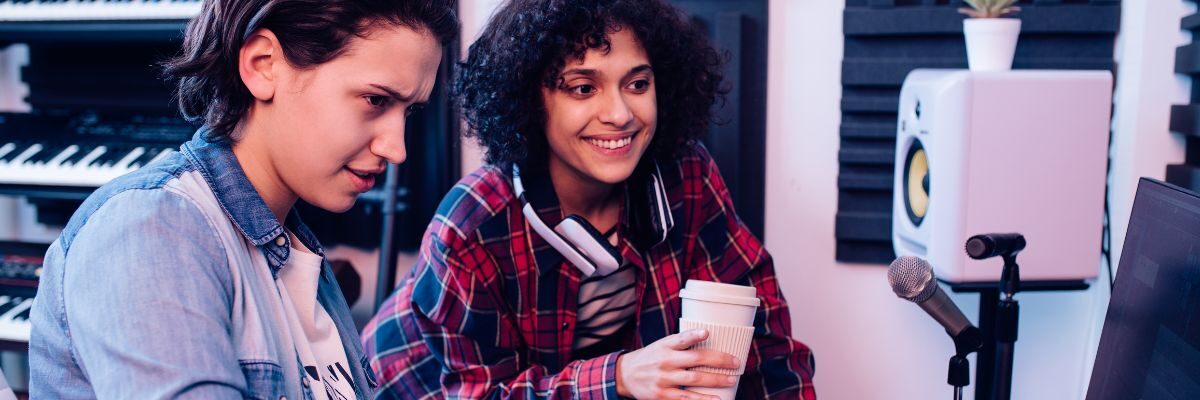
Join our community of more than 75,000 music creators and receive expert insights, tips, and tricks that will help you become a better producer.
5. Practice regularly
It may sound obvious, but regular practice is undeniably important. Investing time and gaining experience is the number-one way to improve at music production.
Over time, you build confidence in your own process, even when it doesn’t feel like you’re making progress. Often, you have to grind through a difficult patch in order to discover better, deeper ideas.
Try to minimize distractions to help you focus. Create a workspace purely for making music. Or, at the very least, close any emails, social media, or other unrelated apps open on your computer.
6. Build an efficient workflow
You want to make it as easy as possible to start working on music. Here are a few tips you can use to build an efficient workflow:
Try creating and saving custom DAW templates and instrument presets—you’ll thank yourself later when you can skip the initial set-up and get straight to work.
Organize your physical and digital environments so it’s easy to navigate your creative spaces. Organize your sample libraries into neat folders so you can find your sounds quickly and develop a system of labeling and color-coding different channels and regions in your project. Your physical workspace should also be set up and ready for you to get working.
Another way to create a smooth and engaging music production workflow is to use a MIDI controller or beat pad. MIDI controllers give you a physical interface (knobs, sliders, buttons, etc.) you can use to more easily navigate your DAW and plugins.
7. Learn sound design
Learning sound design is a useful skill that will give you greater control over your sound. Rather than spending time browsing through sample libraries and presets, why not create the perfect sound for yourself? Check out our guides on sound design and sound synthesis 101 to get you started! Even if you’re using presets and samples as starting points, knowledge of sound design will give you the ability to tweak your sounds into something new and unique.
8. Balance variation and repetition
If you want to make engaging music then you’ll want to master the balance of variation and repetition in music. If your songs are too repetitive, you’ll bore your audience quickly. Not enough repetition, however, and you won’t give your listener anything to latch onto and remember.
You can introduce variation into your music by adding changes to any of the following: timbre, rhythm, melody, counterpoint, and arrangement. A good rule of thumb is to change, add, or subtract an element every eight bars. You can do this by adding or removing a melody, harmony, or beat. You can also use sound design techniques to alter the timbre of a sound over time. With your DAW’s automation lane, a synthesizer’s LFO, or a modulation envelope, you can alter a sound over time to make it more life-like and interesting. Try altering pitch, frequency content, amplitude, and effect parameters to create more movement in your songs.
The video below shares ten essential effects every music producer should know that can help with adding movement, color, and texture.
9. Test your music on different sound systems
Once you’re up and running and a project shows some potential, it’s helpful to test it on a range of sound systems.
Sound response varies greatly from laptop or phone speakers, in-ear and over-ear headphones, Bluetooth speakers, all the way up to studio monitors and larger club or concert systems. Listen to your music on as many of these sources as possible to get the most accurate impression of your mix.
Sound behaves differently in different rooms and environments. Every room has a sonic bias, and over time you’ll learn this specific to your space so you don’t risk overcompensating, with this bias reflected in an unbalanced mix.
This is why you see sound-proofing materials in many studios. If you’re recording live instruments or vocals, putting up some DIY sound insulation in the form of blankets or other soft textures might be enough, as they will absorb and deaden any sonic reflections and ricochets.
10. Learn how to mix your own music
Mixing mixing is the process of adjusting all the individual instrument tracks of a composition so that they create a cohesive sound. The trick is getting the main parts to cut through and avoiding a ‘muddy’ overall sound.
A general best practice for recording is to mix as you go. Getting the best, clearest signal from the start is preferable to trying to correct it afterwards, and saves time when you come to do the final mixdown.
It’s useful to understand the basics of gain staging, which means balancing the volume level at each stage from sound source to the last effect in a channel strip.
Remember to use stereo panning to create a sense of horizontal space in the mix, not just a vertical pillar in the center. This sounds more natural to our ears, as it emulates how we hear sound in real environments.
Mixing is a delicate art that involves trial and error. Check out these tools from iZotope to assist you along the way—Pro Audio Essentials teaches the fundamentals of mixing in the form of interactive games and challenges, while iZotope Neutron 4 includes an AI-powered Assistant View to get your mix to a professional standard with a simple, stripped-back interface.
11. Get familiar with audio mastering
Mastering is the final stage of audio production. It involves boosting and polishing your mixdown to give it a bright, punchy finish, as well as optimizing collections of songs for consistent playback.
Mastering is difficult and technical for the uninitiated—commercial releases are often sent off to expert mastering engineers. While you don’t have to master your own project, it’s helpful to get familiar with the process and understand the language so you can communicate with your engineer. However, it is increasingly possible to create a near-professional master yourself, using a combination of EQ, compression, and occasionally noise reduction.
iZotope’s Ozone even includes a Master Assistant feature that can analyze your track and match its tone and dynamics either to presets for different genres, or your own choice of reference tracks.
Mastering requires a subtle touch. Don’t over do it or you could end up with an overly compressed file—a squashed, square waveform that sacrifices detail and dynamic range, not to mention an assault on the ears.
If you want to learn more about mastering, the Are You Listening? video series is a comprehensive teaching resource.
12. Share your music and get feedback
Releasing your music can be a daunting prospect—there’s definitely a sweet spot between sharing unfinished work prematurely and never having the confidence to share anything.
If you can’t decide when a track is ready, set deadlines for yourself and stick to them. Try exporting the project from your DAW and listening to the audio file—somehow it’s always possible to notice different details this way.
It has never been easier to share your music via the internet. Native Instruments has a great online community where you can post your music and request feedback from other music producers for everything from sound selection to arrangement and mixing.
Dealing with positive and negative criticism is a process in itself—it’s what you do with this information that counts. We all need validation and encouragement in our work, but it’s up to you how much is actually constructive. Ultimately, the only way to finish music and progress as a musician is to not be too harsh on yourself, too perfectionist. Flow with it, don’t force it, and above all don’t forget to enjoy it!
Become a better music producer today
Becoming a better music producer requires a combination of technical proficiency, creativity, and dedication. From developing a strong understanding of music theory and sound design to experimenting with different production techniques and building a unique creative style, the journey to improving as a producer is ongoing. Whether you’re a beginner or an experienced producer, don’t be afraid to take risks and push boundaries in your work. Remember that practice makes perfect, and the more you produce, the better you will become. So keep learning, keep creating, and never stop pursuing your passion for music production.
And if you’re looking for more tools to elevate your productions, Native Instruments offers a free bundle of over 2000+ sounds, 16 pro-grade synths and sampled instruments, and more in KOMPLETE START.








